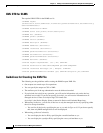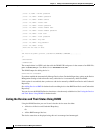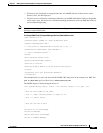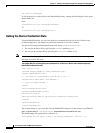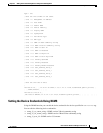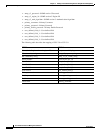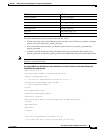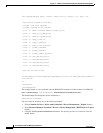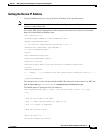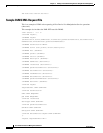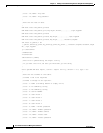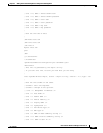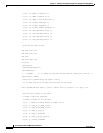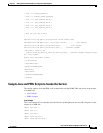
3-56
User Guide for Resource Manager Essentials 4.1
OL-11714-01
Chapter 3 Adding and Troubleshooting Devices Using Device Management
Device List Manipulation Service
;
Cisco Systems NM data import, source = export utility; Version = 2.0; Type = Csv
;
; Here are the columns of the table.
; Columns 1 and 2 are required.
; Columns 3 through 13 are optional.
; Col# = 1: Name (including domain or simply an IP)
; Col# = 2: snmp_v2_ro_comm_string
; Col# = 3: snmp_v2_rw_comm_string
; Col# = 4: snmp_v3_user_id
; Col# = 5: snmp_v3_password
; Col# = 6: snmp_v3_auth_algorith
; Col# = 7: primary_username
; Col# = 8: primary_password
; Col# = 9: primary_enable_password
; Col# = 10: user_defined_field_0
; Col# = 11: user_defined_field_1
; Col# = 12: user_defined_field_2
; Col# = 13: user_defined_field_3
;
; Here are the rows of data.
;
rtr1750,dlmstest,invtest,snmpv3user,snmpv3pass,11111111111111,MD5,puser,ppass,enable,uf
1,uf2,uf3,uf4
]]>
</deviceInfo>
</setCredentials>
The example below is a perl code that calls the DLMS URL and passes in the content of an XML file:
perl d:\dlms\dlms.pl CiscoWorks-Server dlmsdlmsSetDeviceCredentials.xml
The DLMS output for editing the device credentials is:
Authorization succeeded
You can verify the result by any of the following methods:
• Select Common Services > Device and Credentials > Device Management > Export (button)
• Select Resource Manager Essentials > Devices > Device Management > RME Devices > Export
(button)
• Using the DLMS getDeviceCredentials function. See Getting the Device Credentials Data for
further details.



